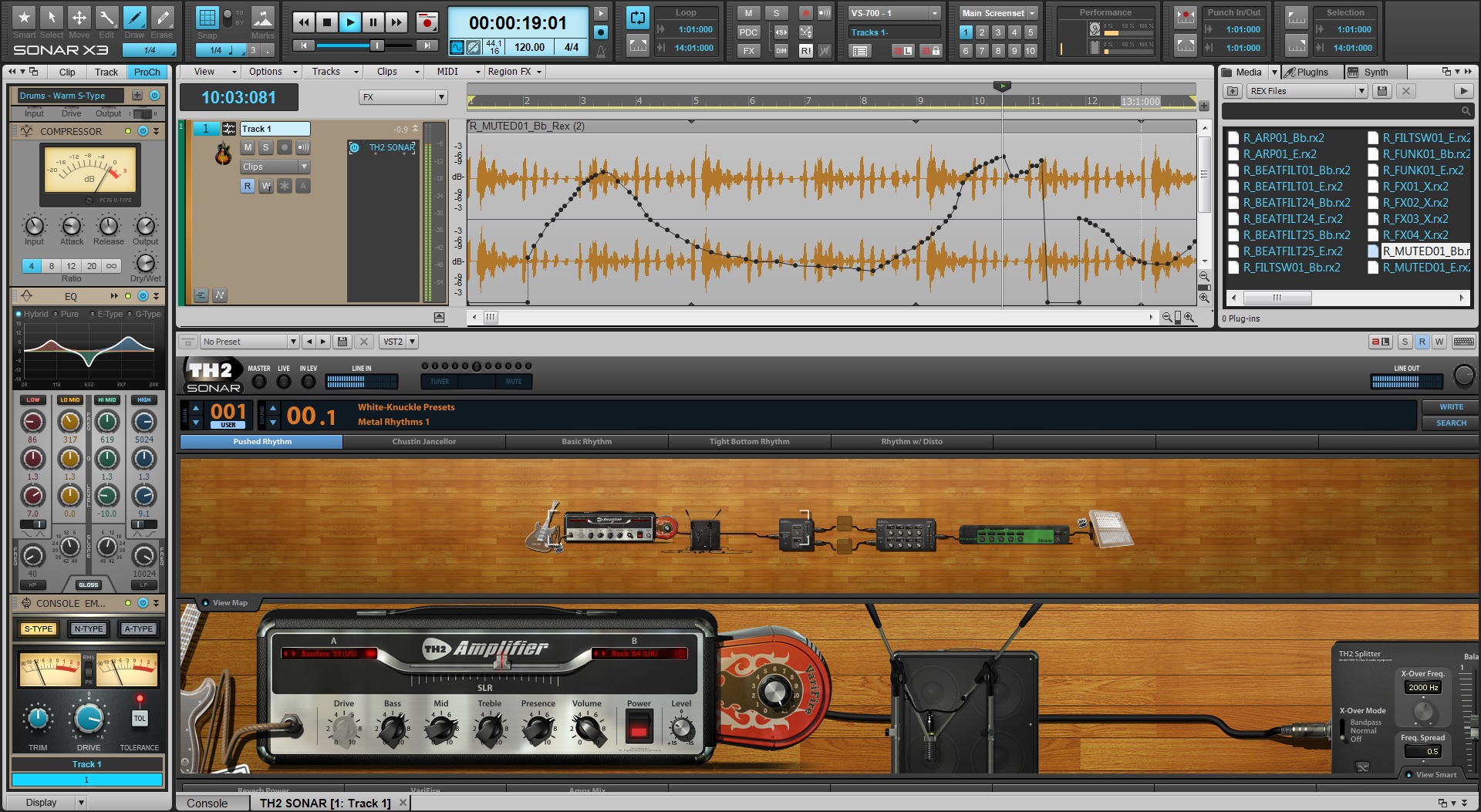1. Eliminate uncertainties with a pre-production demo.
If there is a single doubt in your mind about a song on your record then it’s time to sit down and work out those uncertainties before you get into the studio. Idolizing a recording studio as a creative space is only productive when you’ve booked studio time for being creative. Get that demo sounding as close to the final product as possible so that every part and idea is thought out.
SONAR X3 is ideal for experimenting with those finishing touches. For example, TH2 is a great way to easily grab an amp tone for your bass or guitar. The advanced sound behind Overloud’s flagship product allows you to change amps, input your own impulse responses, and get as close to your final product as you can. The best part about it is that it’s a virtual amp, so you don’t have to commit to your final guitar sound until you’re in your mixing stage.
2. Learn the songs cold.
Studio preparation should involve regular and productive practice schedules. Try to learn the songs so that you can play them all the way through without stopping. Playing full takes will get you the best possible performances of your song and allow you to think more about the other players rather than yourself.
Within SONAR X3 you can access the new Comping record mode and setup your songs to loop over and over again while you practice recording to them. Once you’re done, all you need to do open up the take lanes and solo the different takes. You’ll get a great understanding of your playing and what parts need some polishing.
3. Practice playing to a click track.
These days popular music is recorded to a click and anything that teeters around that isn’t quite considered “pro”. Before you enter the studio it’s a good idea to make sure that your band, or your drummer at least, can keep a solid pulse. This can be a major hang up for recording sessions if players are not rehearsed enough. The recording studio is a place for finishing ideas, not practicing them – so make sure you get this covered in your weekly band practices.
Playing to a click can get old really quick. So instead of doing that, load up one of the many virtual instruments that SONAR has to offer, drop in a MIDI groove or chord progression, and let it loop to your heart’s content – or until your band mate can play that part on time.
SONAR’s extensive list of virtual instruments covers everything from Bass to obscure middle eastern samples from Dimension Pro. You can find just about anything you need in the arsenal of Cakewalk instruments so if the monotony of a metronome is boring you try switching it up to a groove from Addictive Drums.
4. Bring backups of everything.
When prepping for your big day in the studio make sure that anything you’re bringing is backed up at least 3 times. Print out song lyrics, burn the .pdf file to a CD, and have a copy of them on your hard drive. Do the same for your click tracks, practice tracks, and reference material. Studio time isn’t cheap so don’t waste it by having to double back to your house because your only copy of something was lost in transit to the studio.
In the modern age of recording there are modern tools to help with situations like these. Gobbler is making itself the go to solution for cloud storage and DAW compatibility. Within SONAR, now you can back up virtually anything to this service – including your SONAR projects. After that, the files are accessible from anywhere, that’s right – anywhere.
Want to try SONAR X3? Check out the 30 day free trial.





